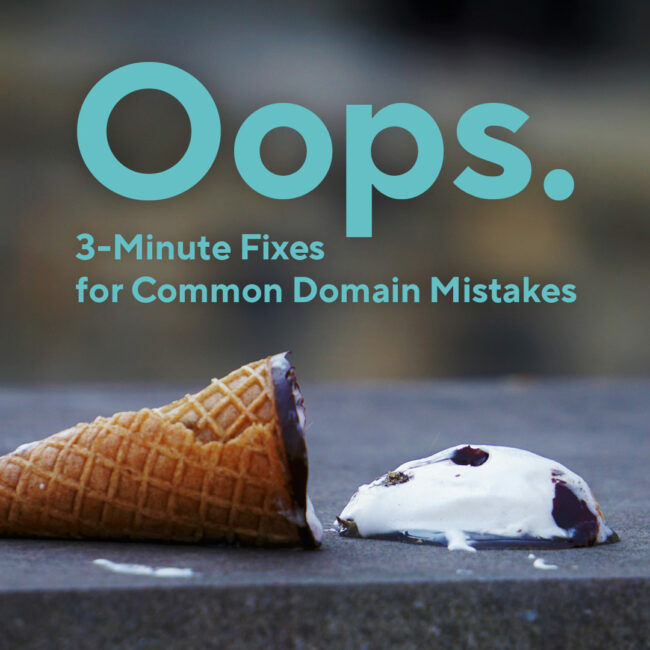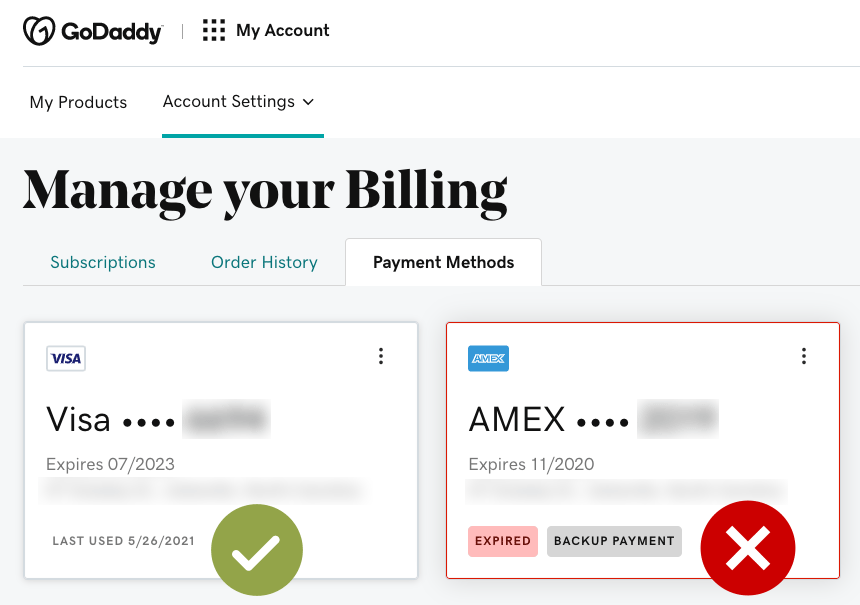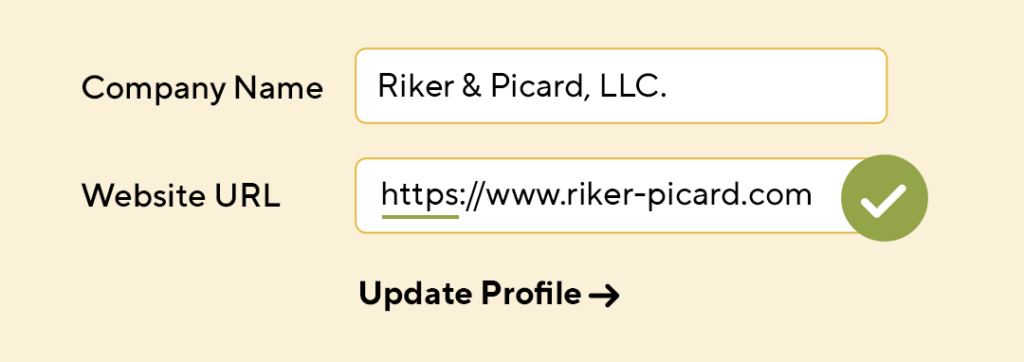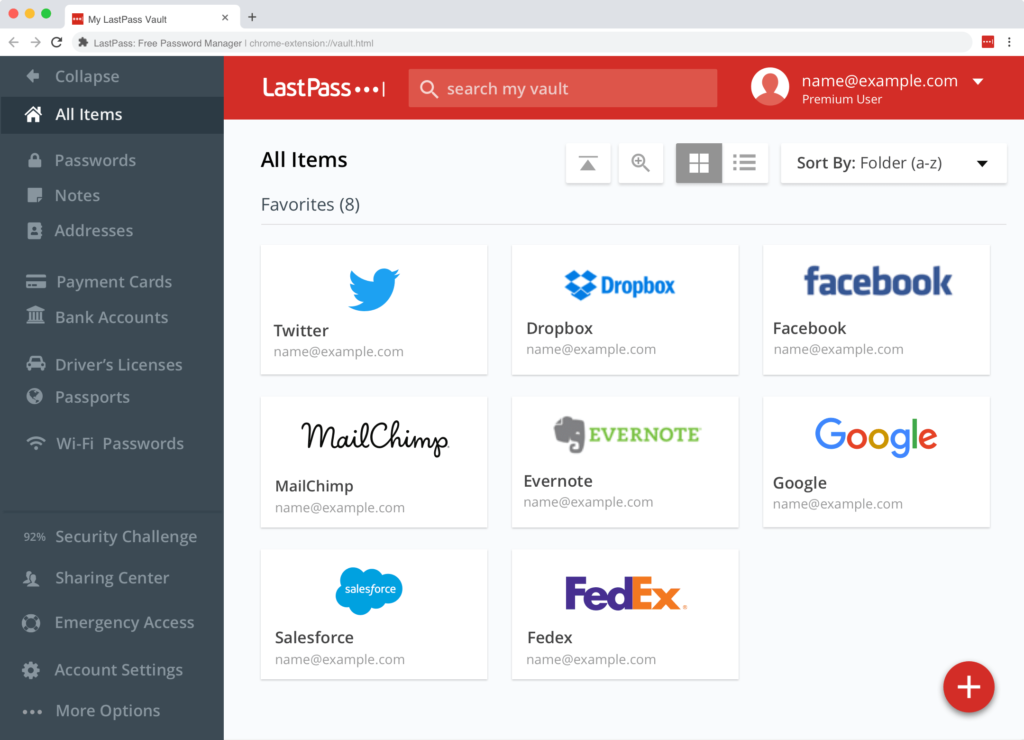
We all make mistakes from time to time with our domain services, like forgetting how to log in and manage it to allowing our credit cards expire. These innocent mistakes can lead to big problems like losing a crucial domain name!
Here are the most common mistakes I’ve seen. The good news? Each one takes only a few minutes to fix.
Quick links:
- Forgetting to renew your domain name
- Expired credit card
- Paying for domains and services you don’t need
- Linking to the insecure version of your domain
- Using domain email as your login email address
- Not using a password manager
1. Forgetting to Renew your Domain Name
I’ve seen more than a few people temporarily lose their domain over the years, just because auto-renew was turned off inside their account. It can take up to two days to get your domain registered again and reconnected, and this means website downtime and lost business in the meantime. In an absolute worst case scenario, the domain could be lost due to someone else snatching it up.
3-minute fix:
- Log in to your registrar (such as Godaddy or Namecheap) – the place where your domain name is registered.
- Look for an area called My Subscriptions or My Products to see your domains listed.
- Turn ON Auto-Renew and Save your settings.

2. Expired Credit Card
Another way to accidentally lose your domain is through an expired credit card. An auto-renewal will fail, because your card cannot be charged.
3-minute fix:
- Log in to your registrar (such as Godaddy or Namecheap) – the place where your domain name is registered.
- Locate the Billing or Payment Methods area.
- Update your credit card on file to a valid card and Save your settings.

3. Paying for Domains and Services you don’t need
Online services often come as discounted packages that renew for a higher price in subsequent years. You may find yourself paying renewal fees on services like email, web hosting, or extra domain names that you never use.
Common services you may not need:
- SSL certificates. These typically come free with hosting, so there’s no need to purchase a standalone certificate except in specific cases.
- Extra hosting/email. I have found some people paying for entire web hosting accounts that they no longer even use! These fees really add up.
- Old domain names. Many of us hold on to old domain names for business or creative ideas that we end up shelving. Review your list of domains each year and see if there are any you can let go.
3-minute fix:
- Log in to your domain registrar and/or web hosting account.
- Look for areas called My Products, Services, or Subscriptions.
- Review the list of services you currently pay for and their renewal dates.
- Turn OFF auto-renew on services you don’t use.
I recently saved a client over $150 by auditing her Godaddy account for services she didn’t need! Contact me for help reviewing your services.
4. Linking to the Insecure Version of your Domain
Don’t use the insecure version of your web address link. Your web address link should always begin with https:// (with the ‘s‘ in https)
The ‘s’ signifies your domain is secure and that you have an SSL Certificate for your domain.
Not sure if you have SSL or what this means? Read more about SSL in my post here.
3-minute fix:
- Check your social media accounts, email signature, and other places where you link to your website.
- Correct any instances of the insecure address. Write your domain links like this: https://yourdomain.com (include the ‘s’ in ‘https’)

5. Using Domain Email as your login email address
Don’t tie your domain email to vital services like domain registration or web hosting. Instead, use a personal email like a gmail or outlook address.
Why? If your hosting or domain name service were to go down (like from forgetting to renew your domain), you may lose access to your domain email. This would lock you out from resetting passwords or receiving important email updates from tech support. Using a personal email address is another safeguard against losing access to your core web services!
3-minute fix:
- Log in to your domain registrar and/or web hosting account.
- Look for an area called My Account or My Profile.
- Update your contact and login email address to a non-domain email address you check regularly, such as a personal gmail address.

6. Not using a Password Manager
I’ve harped on this for years, but using secure passwords and keeping track of them is one of the best things you can to safeguard and streamline your digital life.
1-minute fix:
- Use a password manager like LastPass; read more about that in my post here. You can sign up in a few seconds and start using it right away for free!

Need help making sense of your domains and web services?
I provide website and account audits to help you figure out what services you need and what you don’t. Contact me here for help.
